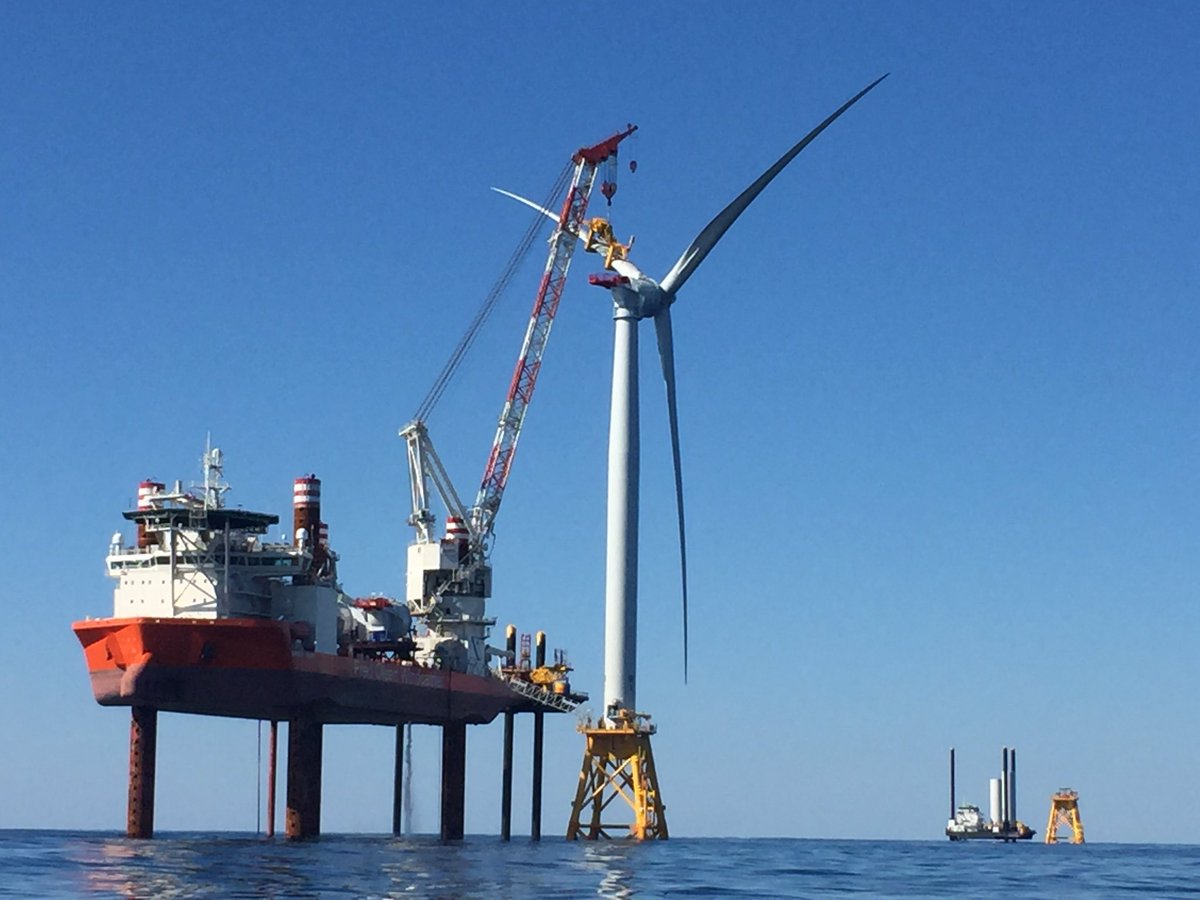The U.S. offshore wind industry appears poised at a brink of optimism it first saw a decade ago, when Obama administration officials talked of wind power assuming coal’s then-dominant role in the nation’s electric grid.
That moment was dashed when the Cape Wind proposal off Massachusetts was hounded away by its Cape Cod opponents, and the Obama offshore energy plans derailed by the April 2010 Deepwater Horizon disaster.
Now with the Biden administration looking to renewable energy as a cornerstone of economic recovery, offshore wind’s time could be here again. And just before leaving for the holidays, Congress took a step to push for employing more U.S. mariners in the industry.
The annual National Defense Authorization Act – approved by Congress in its first override of a presidential veto by Donald Trump – included a provision explicitly requiring that all U.S. laws including the Jones Act apply to renewable energy development on the Outer Continental Shelf.
“By eliminating uncertainty over this issue, Congress will help unleash robust investment and job creation in the American maritime industry tied to clean offshore energy development,” the American Maritime Partnership said in celebrating the final vote on New Year’s Day.
The bipartisan push to ensure wind developers comply with the Jones Act and Outer Continental Shelf Lands Act of 1953 came after months of dueling among lobbyists from wind and offshore services industries.
Wind power advocates warned a looming worldwide shortage of wind turbine installation vessels would hobble development of U.S. projects for years, before Jones Act-compliant WTIVs can be built.
The offshore industry countered that U.S. companies with their experience and expertise can keep the work rolling during that time – without need for Jones Act waivers.
That outcome could be a win for both the U.S. maritime and commercial fishing industries. The Responsible Offshore Development Alliance, a coalition of fishermen and ports on the East and West coasts, hopes holding wind developers to Jones Act requirements could slow the pace of development and allow more breathing room for better planning by the Bureau of Offshore Energy Management, including more involvement by fishermen to reduce future conflicts.
The Biden administration will first have to deal with the Vineyard Wind project off southern New England, where the Trump administration in its final weeks attempted to pull the plug on permitting the 800-megawatt turbine array.
It was a last bit of drama in the Trump administration’s schizophrenia over offshore wind. While Donald Trump ridiculed wind power at his public rallies, his own Department of Interior busily worked at approving offshore wind energy leases off the East Coast and mapping out new areas in the Pacific.
In fact the federal government’s appetite for offshore energy leasing has persisted for decades, no matter whether a Republican or Democratic president occupies the White House.
An incoming Biden administration will likely do all it can to ease the path for offshore wind energy developers in the Northeast states, where like-minded state governments have grand aspirations for moving their energy sources over the horizon.



.JPG.small.400x400.jpg)

